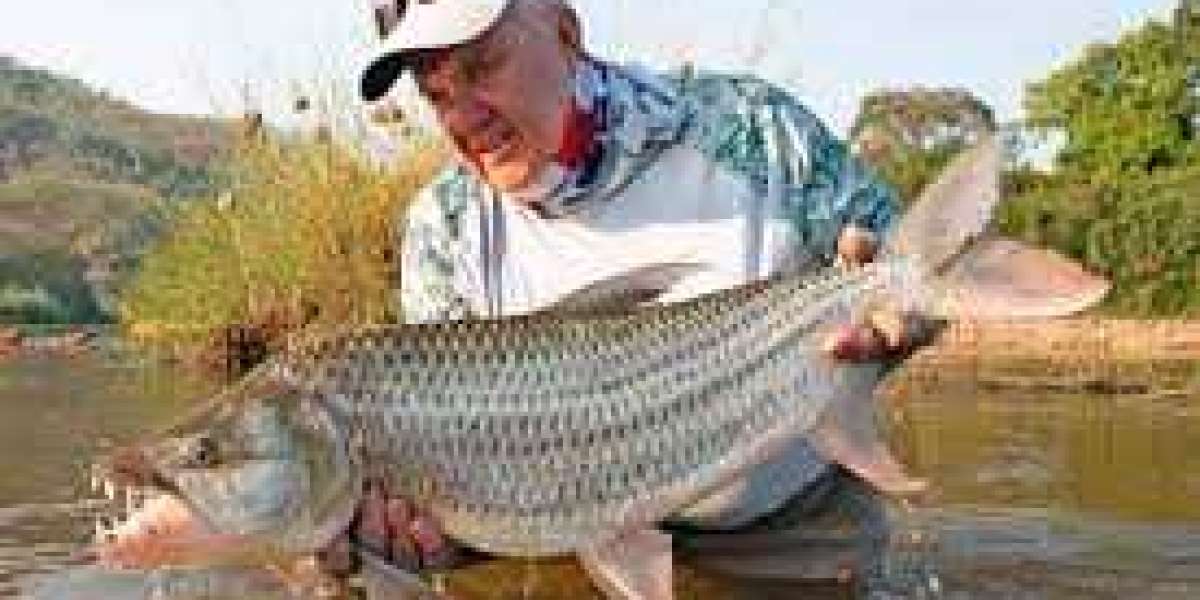Fishing is not just a hobby for many; it’s a passion that demands skill, patience, and a deep understanding of the natural world. One of the most critical aspects of becoming a successful angler is comprehending fish behavior. Whether you are an experienced fisherman or a beginner, understanding the various factors that influence fish behavior can significantly improve your chances of making a successful catch. In this article, we’ll explore the various aspects of fish behavior and how you can use this knowledge to become a more effective fisherman. We will also touch on specific species, such as tuna fish, and provide insights into popular fishing destinations like Golden dorado fishing in Argentina.
1. The Role of Fish Behavior in Fishing Success
Fish, like all animals, exhibit specific behaviors that can be influenced by environmental factors, seasonal changes, and their internal biological clocks. Understanding these patterns is essential for knowing where and when to fish, what bait to use, and the best techniques to employ.
Fish behavior is influenced by a variety of factors including:
- Water Temperature: Fish are cold-blooded animals, so their metabolism is directly affected by water temperature. As the water warms up in the summer, fish tend to become more active. During colder months, fish slow down and may go into deeper waters.
- Light Levels: Fish behavior is also influenced by the amount of light in the water. Most fish are more active at dawn and dusk when the light is low, and they often hide in deeper, darker areas during the day or night.
- Water Conditions: The clarity of the water, the presence of aquatic vegetation, and the oxygen levels in the water can all play a role in how fish behave. These factors affect their feeding habits, breeding, and migratory patterns.
By understanding these key factors, anglers can adjust their fishing strategies to match the behavior of the fish they are targeting, improving their chances of success.
2. Tuna Fish: The Ocean’s Powerhouse
One of the most sought-after fish species in the world is the tuna fish. Known for its strength and speed, tuna are a favorite target for both professional and recreational anglers. Tuna fish exhibit unique behavior patterns that make them both a challenging and exciting species to catch.
Tuna are pelagic fish, meaning they live in the open ocean, far from shore. They tend to swim in schools, often migrating over long distances in search of food. Their feeding habits include preying on smaller fish such as sardines, anchovies, and other small marine creatures. This hunting behavior makes them particularly aggressive and fast-moving.
Tuna fish are known for their ability to dive to great depths in search of cooler water and food, which means understanding their migratory patterns and preferred feeding zones is essential for successful tuna fishing. In addition, tuna are known to be more active during certain times of the day, especially at dawn and dusk, making these times ideal for targeting them.
3. Factors Affecting Tuna Behavior
Several factors influence the behavior of tuna fish, making them a unique and challenging species to fish for. Here are some of the key aspects to consider:
- Migration Patterns: Tuna are highly migratory, traveling vast distances in search of food and optimal breeding grounds. Understanding their migratory routes can help you determine the best time and place to catch them.
- Temperature Preferences: Tuna are particularly sensitive to water temperature. They thrive in warmer waters, typically between 60 and 70°F (15 to 21°C). Knowing the water temperature is crucial for locating tuna schools.
- Bait Selection: Tuna are aggressive predators that feed on smaller fish. Using the right bait, such as live or cut bait like sardines or mackerel, can attract tuna to your fishing area.
By taking into account these factors, anglers can increase their chances of landing a tuna fish.
4. Golden Dorado Fishing in Argentina
While tuna fish are primarily associated with the open oceans, there are other exciting species to target in different parts of the world. One such destination is Golden dorado fishing in Argentina. The Golden Dorado is a predatory fish found in the rivers and lakes of South America, particularly in Argentina, Paraguay, and Brazil.
Known for its striking golden appearance and aggressive nature, the Golden Dorado is a challenging catch for anglers. These fish are often found in fast-moving rivers, making fishing for them both thrilling and physically demanding.
Golden Dorado exhibit behavior similar to that of other predatory fish. They are territorial and will fiercely protect their home waters. Their feeding habits include preying on smaller fish and even insects. Golden Dorado are most active during the warmer months, typically between spring and summer.
Fishing for Golden Dorado in Argentina requires a keen understanding of the species’ behavior. Local guides are invaluable in this pursuit, as they know the best spots, techniques, and times for catching this elusive and powerful fish.
5. General Tips for Understanding Fish Behavior
No matter what species you are targeting, there are some general tips that can help you understand fish behavior better and increase your chances of success:
- Observe and Adapt: Pay attention to the behavior of fish you encounter. Are they feeding aggressively, or do they seem to be in a resting state? Adapt your techniques based on their activity level.
- Use the Right Equipment: Fish behavior is influenced by environmental conditions, and using the right equipment, such as rods, reels, and bait, can help you mimic the conditions that attract fish.
- Learn Local Patterns: Whether you’re fishing for tuna fish in the open ocean or Golden Dorado in Argentina, learning the specific behaviors of the local fish populations is key to success. Local fishing guides and online resources can provide valuable insights into regional fish behaviors.
Conclusion
Understanding fish behavior is an essential aspect of becoming a successful angler. By taking into account factors such as water temperature, light levels, and migration patterns, you can greatly increase your chances of making a successful catch. Whether you're targeting tuna fish in the open ocean or venturing into the rivers of Argentina for Golden Dorado fishing, learning about the behavior of your target species will help you become a more efficient and knowledgeable fisherman.
Fishing is about patience, observation, and adaptation. By combining your knowledge of fish behavior with the right equipment and techniques, you can improve your fishing success and enjoy the thrill of landing your next big catch.
FAQs
What time of day is best for fishing for tuna fish?
Tuna fish are most active during dawn and dusk, so these times are ideal for fishing.
Where can I go for Golden Dorado fishing?
Golden Dorado fishing is popular in Argentina, particularly in the Paraná River and surrounding areas.
What is the best bait for catching tuna fish?
Live or cut bait such as sardines, mackerel, and anchovies are effective for catching tuna.
How deep do tuna fish swim?
Tuna are known to dive to great depths in search of food, often swimming hundreds of meters below the surface.
What are the feeding habits of Golden Dorado?
Golden Dorado are aggressive predators, feeding on smaller fish and insects found in the fast-moving rivers they inhabit.













